Unfortunately, there is no “season” for termites. They can infest your home any time of year, so termites are a particularly insidious threat to your home. Even compared to carpenter ants, termites have the capacity to do more damage in a shorter amount of time. Several species of termites may be found throughout the United States, and Illinois is no exception. Find out which types of termites are in Illinois, the risks to your home, and how to prevent them.
Types of Termites in Illinois
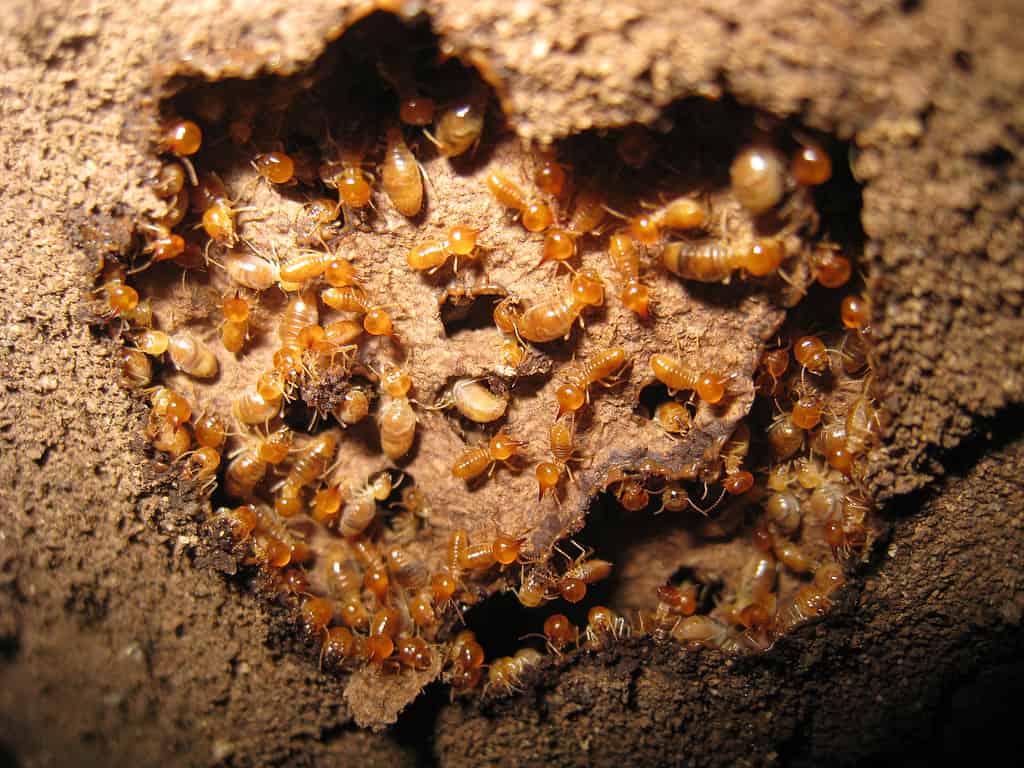
Eastern subterranean and dark southeastern subterranean termites are the only two types of termites in Illinois.
©Cheng_Wei/iStock via Getty Images
While there are five main categories of termites in the United States, only one category plagues Illinois: subterranean termites. Within the subterranean category, Illinois has two specific types: eastern subterranean termites and dark southeastern subterranean termites.
Eastern Subterranean Termites
This type of termite may be found throughout the South and coastal United States. Dark brown in color and with straight, bead-like antennas, the wings on these termites are brownish-gray. Typically, they are about 1/8 of an inch in size.
A telltale sign of either type of subterranean termite is the presence of mud tubes. Mud tubes are constructed from soil and wood mixed together with termite saliva. They allow the termites to travel from their underground colonies to an open-air food source, protecting them from predators and dry air.
Eastern Subterranean Termites Castes
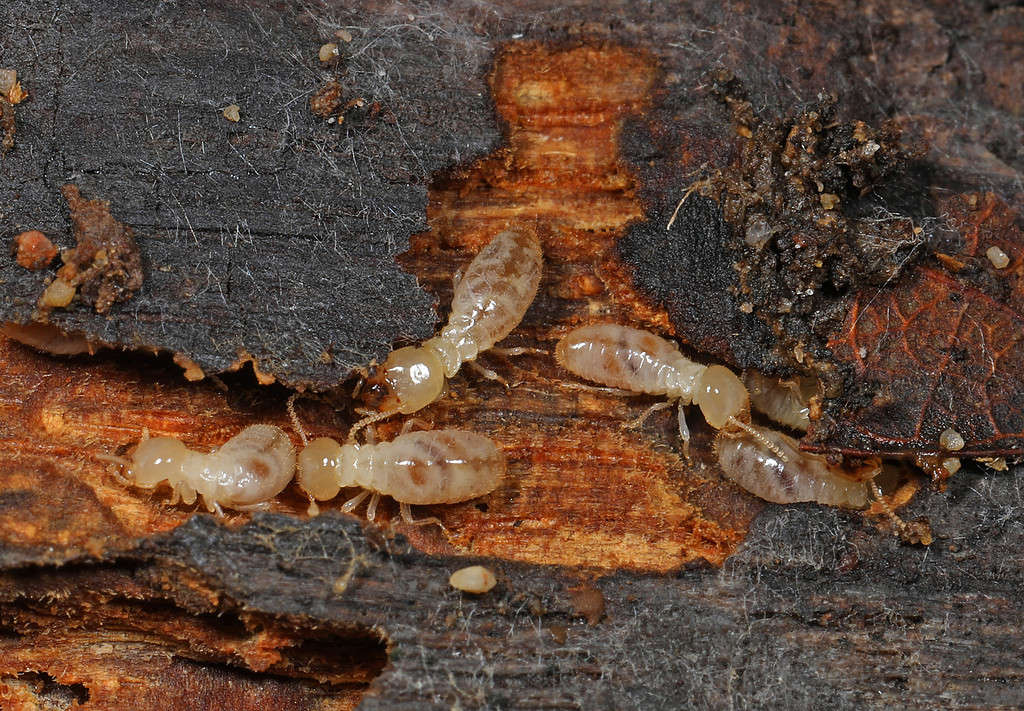
Only the eastern subterranean termites’ atlates, or reproductive, have wings.
©Judy Gallagher, CC BY 2.0 – License
There are three main castes of eastern subterranean termites: atlates, workers, and soldiers.
- Atlates: Also known as “swarmers,” the atlates have wings and control the colony’s reproduction. They are dark brown in appearance and only grow to be 3/8 to 1/2 inches long, with wings nearly the same length.
- Workers: The workers construct the tunnels and mud tubes and are the ones causing the most damage to the wood in your home. They do not have wings and are about 1/4 of an inch in size or smaller. Creamy-white in appearance, the workers have hardened, pronounced mouth parts and heads.
- Soldiers: Featuring large mandibles and heads for defending the colony, soldiers are wingless and creamy-white with often brownish heads.
What Eastern Subterranean Termite Damage Looks Like
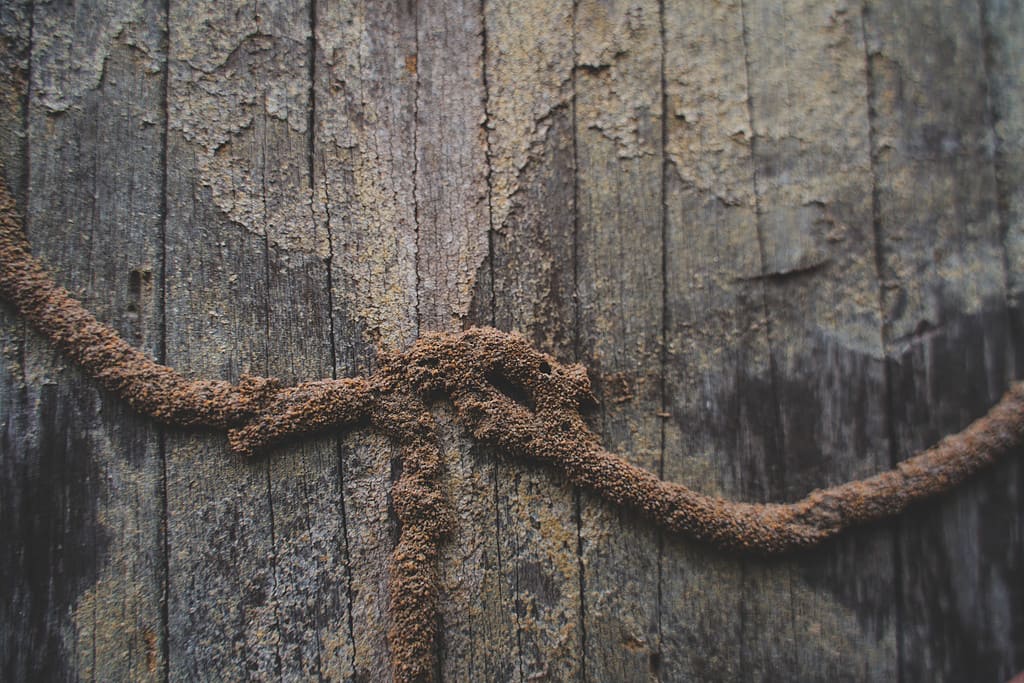
Subterranean termites consume wood along the path of the grain.
©EQS-M/iStock via Getty Images
Wood closest to the ground is often targeted first. This means fence posts, window sills, frames, foundational supports, and sub-flooring. This type of termite only eats soft wood and will eat around hardwood, so the damaged area may have a layered appearance. Subterranean termites also eat along the wood grain, whereas other types of termites eat against the grain.
Dark Southeastern Subterranean Termites
The range of this termite is across the northern states down to North Carolina. With dark brown or black bodies, the wings on these termites are pale in color. Typically, they are about 1/3 of an inch long.
Also, like eastern subterranean termites, dark southeastern subterranean termites travel via mud tubes.
Dark Southeastern Subterranean Termites Castes
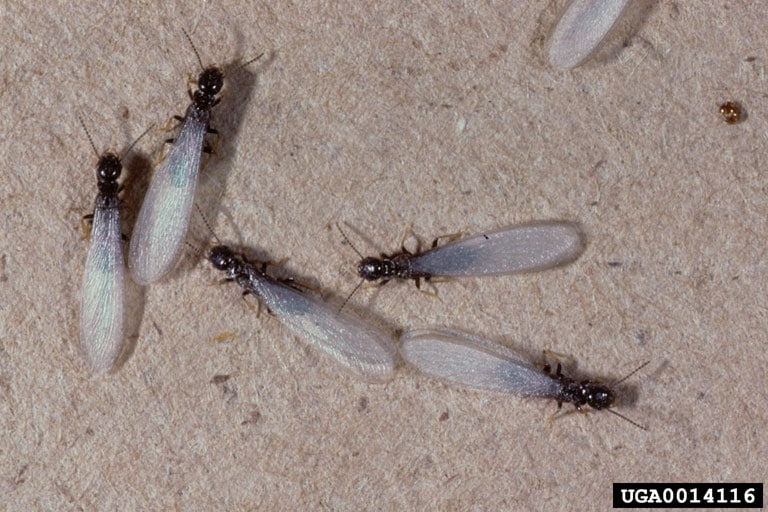
The atlates are black in color, whereas the workers are cream in color.
©Gerald J. Lenhard, Louisiana State University, Bugwood.org – See more at: http://www.insectimages.org/browse/detail.cfm?imgnum=0014116#sthash.RcW6DHBX.dpuf, CC BY-SA 3.0 – License
There are three main castes of dark southeastern subterranean termites to identify: atlates, workers, and soldiers.
- Atlates: Also known as the reproductives, one colony will make thousands of atlates which will swarm during the warm spring months to start new colonies. The atlates are the ones with the two sets of pale-colored wings.
- Workers: Responsible for the maintenance and expansion of the colony, the workers are creamy-white. This caste of termites has hardened, pronounced mouth parts and heads.
- Soldiers: Wingless and cream-colored, the soldiers have large mandibles and heads for defending the colony.
What Dark Southeastern Subterranean Termite Damage Looks Like
Attracted to softwoods such as spruce trees, cedar, or fir, dark southeastern termites will target yard trees, decks, wooden structures, and even furniture surfaces. The worker termites leave a honeycomb-shaped hollow within the wood. Oftentimes, you may spot soil or mud packed within the hollows.
Risks of Termite Infestations

Most home insurance companies do not cover termite damage.
©Chaikom/Shutterstock.com
A big risk of a termite infestation is the damage to the structural integrity of your home. Some affected areas include:
- Wooden foundations
- Flooring and sub-flooring
- Walls
- Crawl spaces or basements
- Roofing
Many home insurance companies do not cover termite damage, as they view it as preventable. So, besides the risk to the safety of your home, termites might cause out-of-pocket costs.
How to Prevent Termites in Illinois
Moist soil and softwood attract both types of subterranean termites. So, if you are building your home or contracting its construction, make sure to take these safety measures:
- Set up a termite barrier before building.
- Make sure to have a concrete foundation that is either poured or otherwise free from cracks.
- Prevent wood-to-soil contact by forming a ventilation space between the soil and wood at the foundation level.
- Don’t leave wood scraps or debris on the site.
- Build with treated wood.
Treatment Options for Termites in Illinois
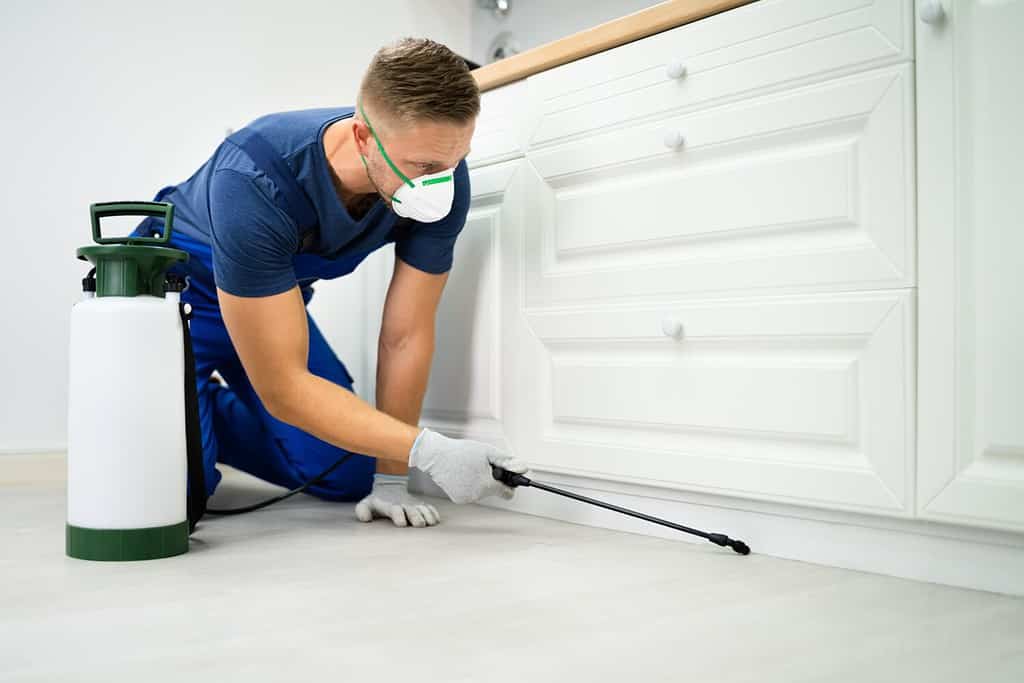
A pest control company may have to fumigate your home for severe infestations.
©Andrey_Popov/Shutterstock.com
Chemical Termite Treatments
There are two main chemical treatments: liquid termiticides and termite baits. Liquid termiticides are applied around the foundation to deter termites. Termite baits are stations of slow-acting toxins that the termites eat and then bring back to the colony. Over the next couple of months, the colony eventually dies.
Pest Control
If the subterranean termite infestation is completely out of control, a pest control company will fumigate your home. Covering your home in a gas-proof tent, the pumped-in gas spreads throughout your entire house, killing the termites instantly.
The photo featured at the top of this post is © Judy Gallagher, CC BY 2.0 – License / Original
Thank you for reading! Have some feedback for us? Contact the AZ Animals editorial team.






